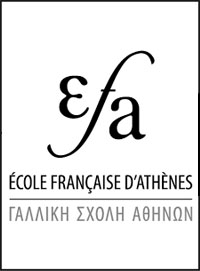Chania - Archaeological site of Falasarna - 2022
Informations Générales
Numéro de la notice
18531
Année de l'opération
2022
Chronologie
Mots-clés
Grotte - Sanctuaire - Édifice religieux - Temple - Figurine - Outillage/armement - Sculpture - Métal - Verre
Nature de l'opération
Institution(s)
Εφορεία Αρχαιοτήτων Χανίων (Éphorie des antiquités de Canée)
Υπουργείο Πολιτισμού και Αθλητισμού (Ministère de la Culture et des Sports)
Toponyme
Notices et opérations liées
2022
Description
Archaeological site of Falasarna. Elpida Chatzidaki (Ministry of Culture and Sports) and E. Papadopoulou (Ephorate of Antiquities of Chania) report findings from the ancient temple of Demeter at the Acropolis of Falasarna that date to the Archaic and Classical periods.
Before it collapsed, the temple was built on a rocky hill, at the plateau between two mountain peaks, with a natural cave with plenty of water. After the collapse, the rocky hill was used as a sanctuary for chthonic deities related to earth, water, fertility and the symbolism of water as a life source.
Excavations at the rocky areas have unearthed naked female figurines left as votive offerings that date to the early Archaic period (650 BC). Their main characteristic is the daidalic hairstyle and the tall polos. Other findings that date to the 6th c. BC include objects made from Egyptian or Phoenician glass, clay figurines of birds and animals, arrowheads and spearheads, miniature pottery vessels, enthroned female figurines, and a female figurine holding a poppy flower and a pomegranate. Findings that date to the 4th c. BC, include hudriskes, a beaked jug with a red-figured representation of a flying cupid, iron pieces, and objects made of alabaster.
Before it collapsed, the temple was built on a rocky hill, at the plateau between two mountain peaks, with a natural cave with plenty of water. After the collapse, the rocky hill was used as a sanctuary for chthonic deities related to earth, water, fertility and the symbolism of water as a life source.
Excavations at the rocky areas have unearthed naked female figurines left as votive offerings that date to the early Archaic period (650 BC). Their main characteristic is the daidalic hairstyle and the tall polos. Other findings that date to the 6th c. BC include objects made from Egyptian or Phoenician glass, clay figurines of birds and animals, arrowheads and spearheads, miniature pottery vessels, enthroned female figurines, and a female figurine holding a poppy flower and a pomegranate. Findings that date to the 4th c. BC, include hudriskes, a beaked jug with a red-figured representation of a flying cupid, iron pieces, and objects made of alabaster.
Auteur de la notice
Georgios Mouratidis
Références bibliographiques
https://www.culture.gov.gr/el/Information/SitePages/view.aspx?nID=4408#prettyPhoto
Date de création
2022-11-15 12:02:59
Dernière modification
2023-08-21 12:57:36








